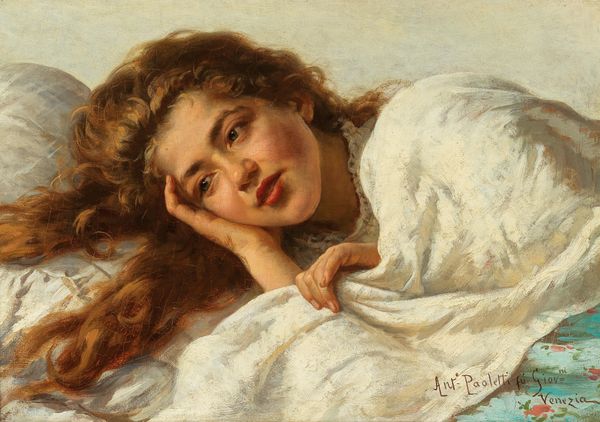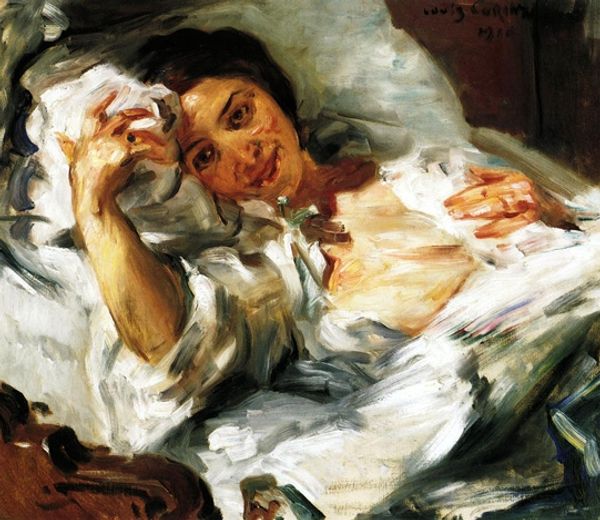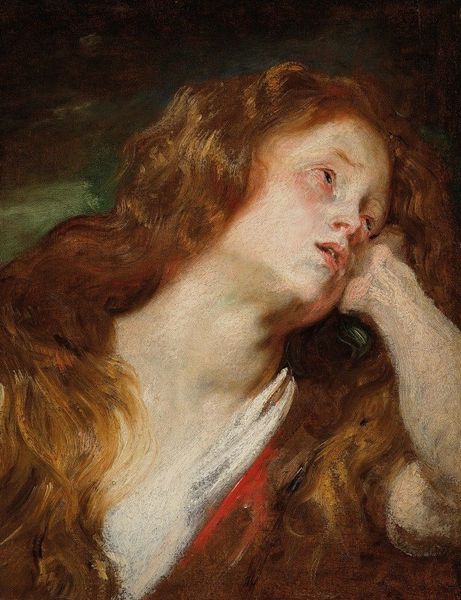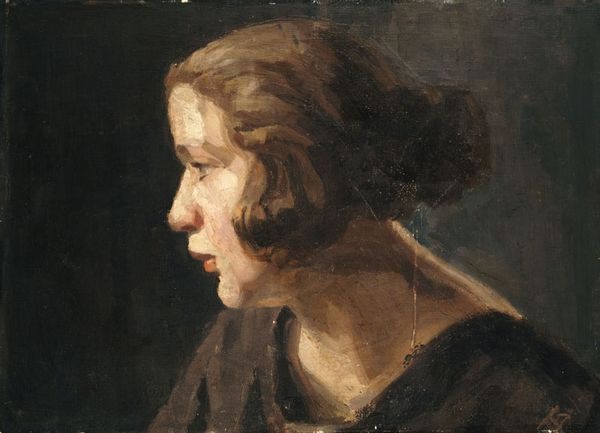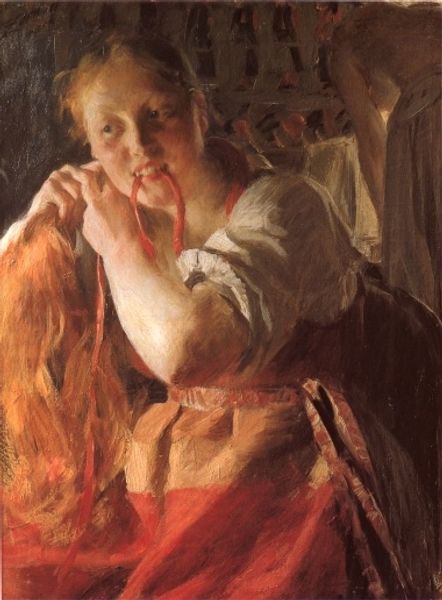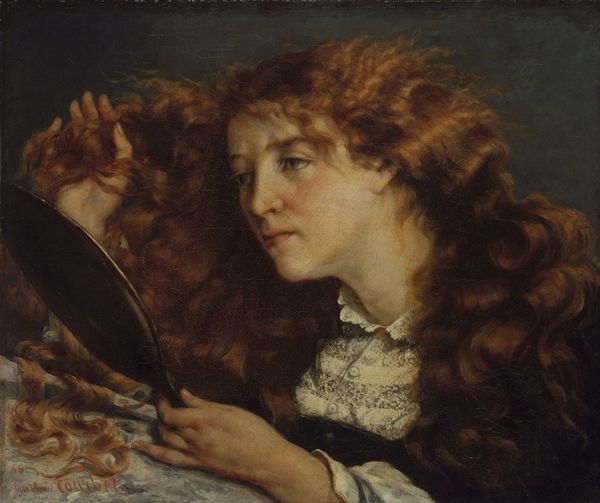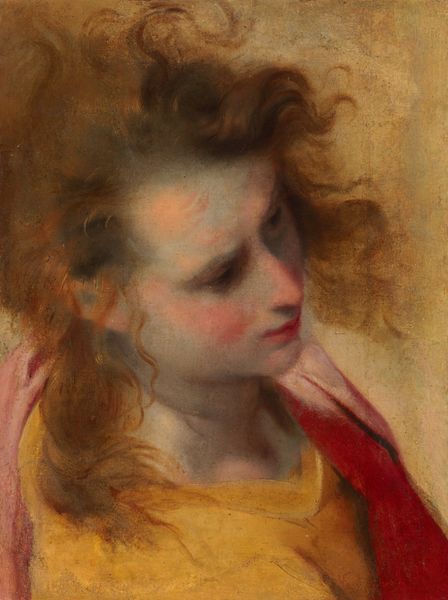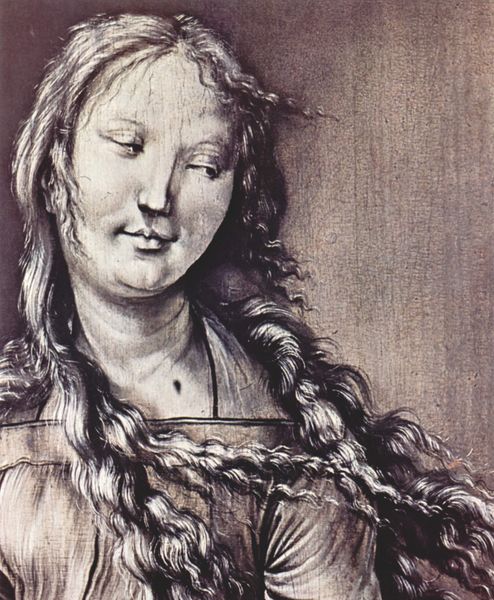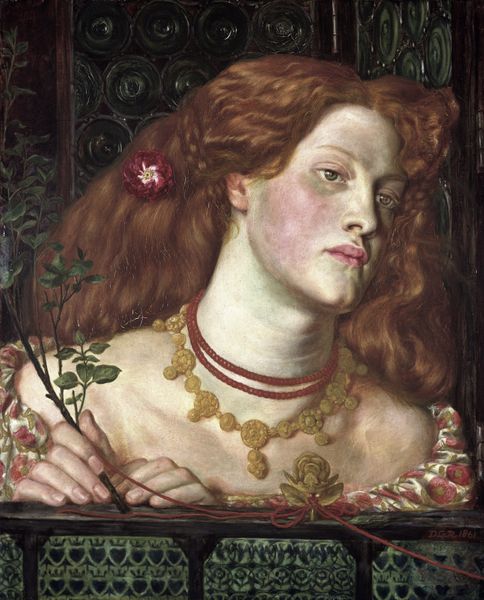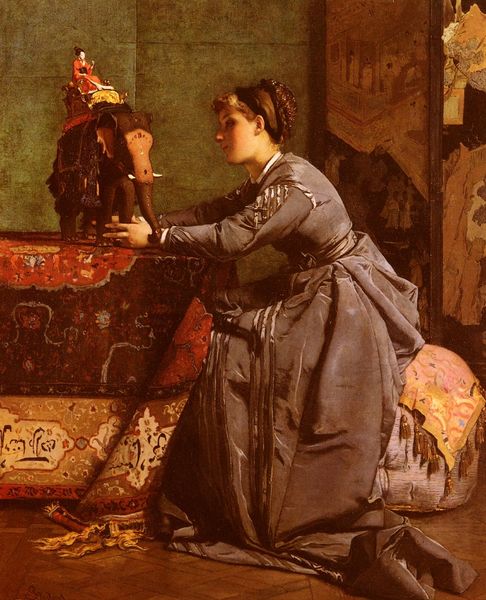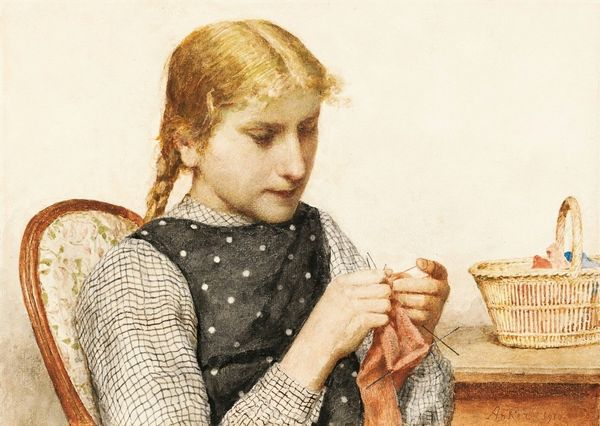
Girl at a Lattice 1862
0:00
0:00
dantegabrielrossetti
Fitzwilliam Museum (University of Cambridge), Cambridge, UK
Dimensions: 26 x 29 cm
Copyright: Public domain
Editor: Rossetti's "Girl at a Lattice," painted in 1862, offers a glimpse of quiet contemplation, executed in oil paint. There’s a gentle melancholy about the sitter’s gaze. What narratives do you think the painting tries to construct and who is this "Girl at a Lattice?" Curator: A Pre-Raphaelite painting, especially from Rossetti, positions the subject as both object and actor within a complex web of social and artistic dialogues. The "girl" here is likely Jane Morris, a muse who transcended simple portraiture. Think about the rise of Aestheticism and how Rossetti uses the female form. How does her specific, almost iconic, depiction feed into or challenge prevailing Victorian ideals of womanhood? Editor: It seems like more than just a simple portrait; it feels… performative. Was there a conscious effort by Rossetti to, I don’t know, elevate his subjects? Curator: Absolutely! Rossetti was deeply interested in creating types, figures laden with symbolic meaning. He wasn't simply capturing a likeness; he was crafting a myth, engaging with historical concepts of beauty. Consider the context: the burgeoning art market, the rise of celebrity, and the Pre-Raphaelites’ self-conscious rebellion against academic tradition. Do you see any hints of that rebellion in the work’s composition? Editor: I can see a slight breaking down of traditional painterly restraints. The composition is also very flat and slightly naive. What does this deviation signify? Curator: That tension is crucial! It speaks to their artistic mission and socio-cultural positioning. It challenges accepted notions of beauty. It presents "art for art’s sake," an ethos that further empowers both the artist and, arguably, the subject. But whose story is really being told? Editor: It’s made me consider art’s potential to reflect society as much as the intentions of the artist. Thanks! Curator: And that is the key, thinking about these works in relation to each other.
Comments
No comments
Be the first to comment and join the conversation on the ultimate creative platform.
